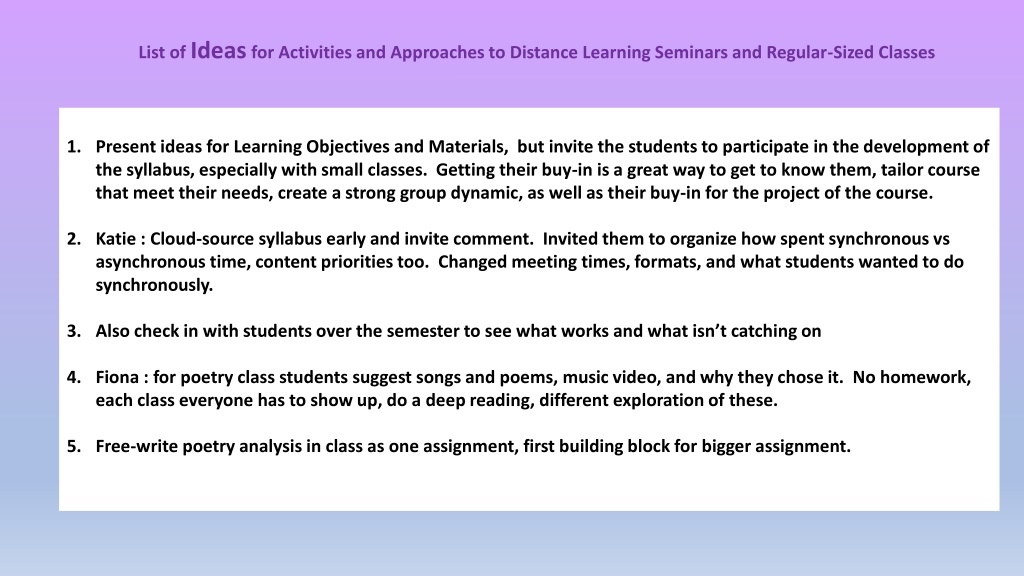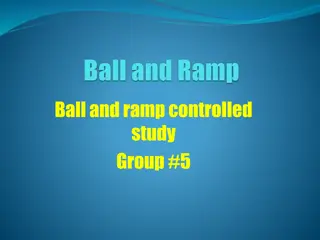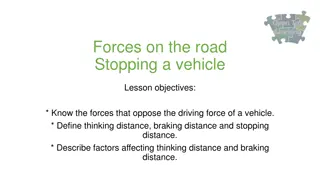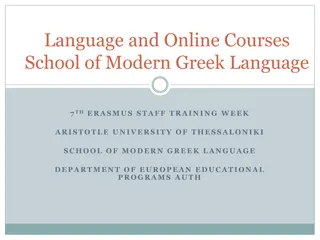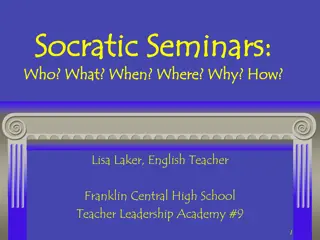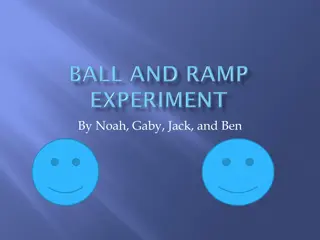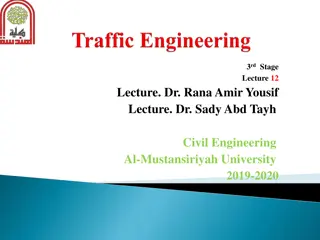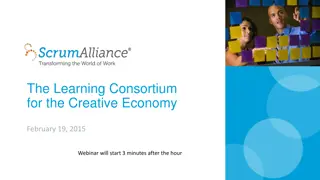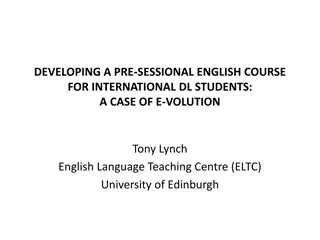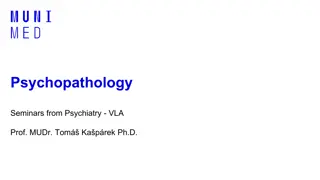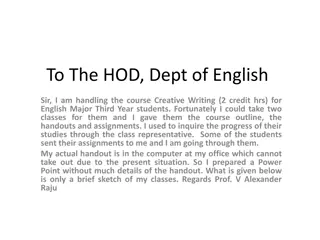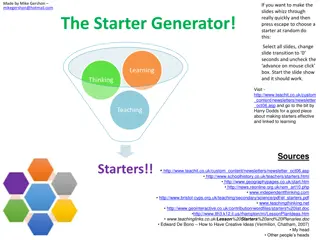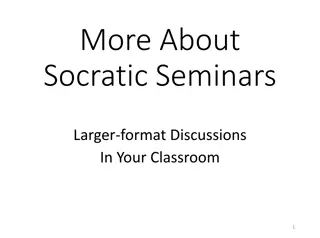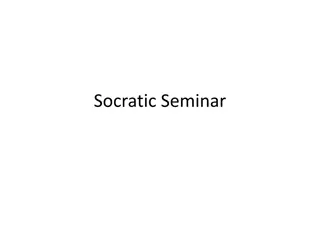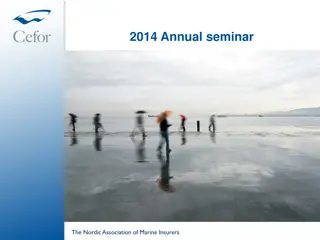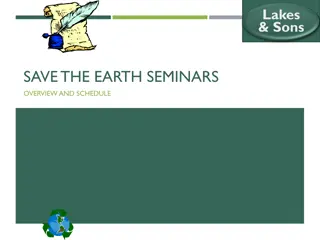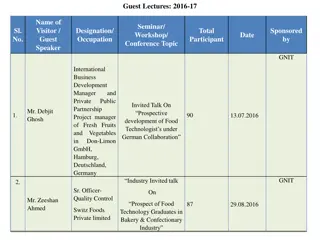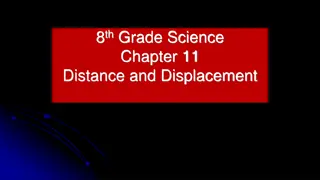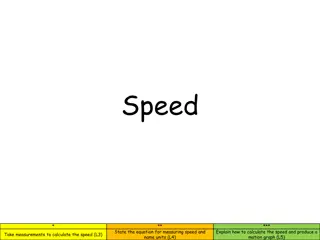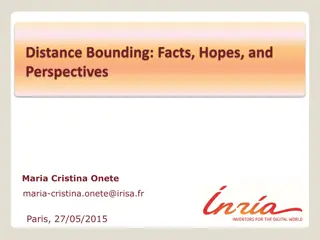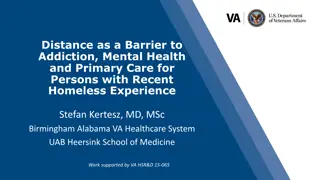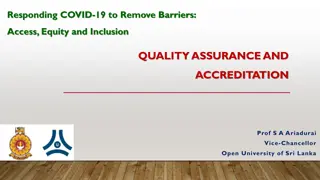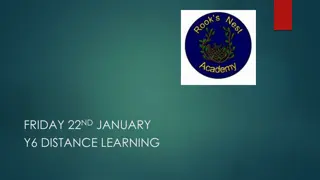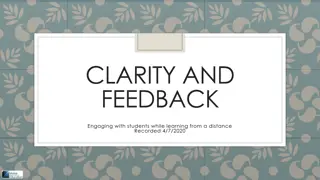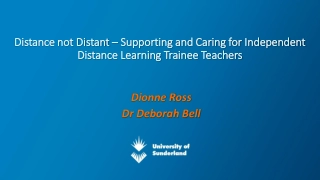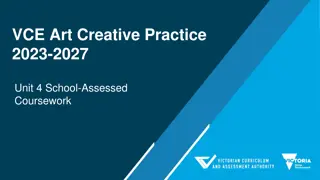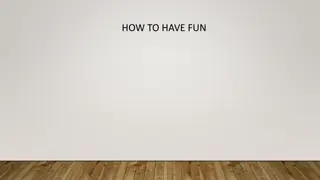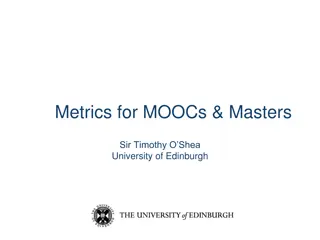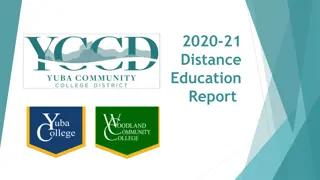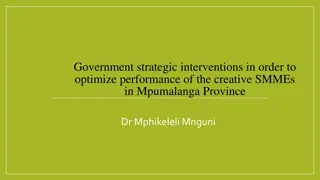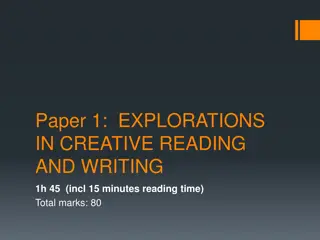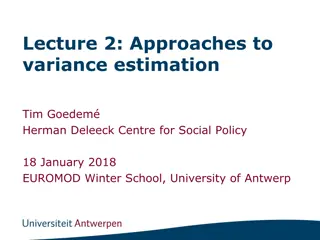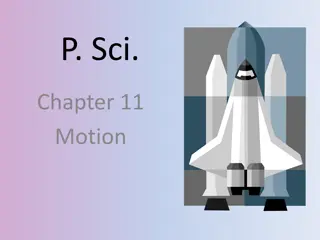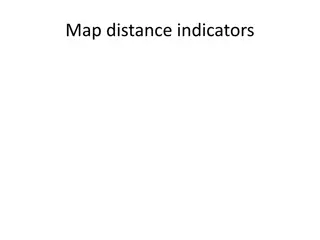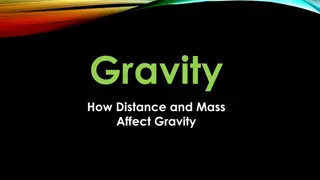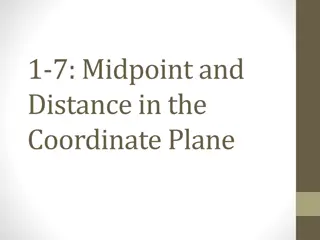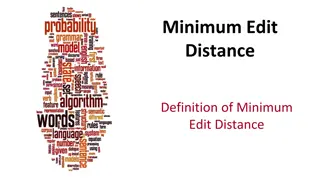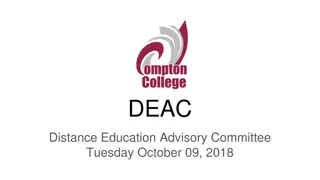Creative Approaches to Engaging Students in Distance Learning Seminars
Encourage student participation in syllabus development, utilize diverse activities like poetry analysis and genre exploration, implement synchronous/asynchronous balance, and leverage tools like MEMES, audio blogs, and PollEverywhere for interactive and dynamic learning experiences.
Download Presentation

Please find below an Image/Link to download the presentation.
The content on the website is provided AS IS for your information and personal use only. It may not be sold, licensed, or shared on other websites without obtaining consent from the author. Download presentation by click this link. If you encounter any issues during the download, it is possible that the publisher has removed the file from their server.
E N D
Presentation Transcript
List of Ideas for Activities and Approaches to Distance Learning Seminars and Regular-Sized Classes 1. Present ideas for Learning Objectives and Materials, but invite the students to participate in the development of the syllabus, especially with small classes. Getting their buy-in is a great way to get to know them, tailor course that meet their needs, create a strong group dynamic, as well as their buy-in for the project of the course. 2. Katie : Cloud-source syllabus early and invite comment. Invited them to organize how spent synchronous vs asynchronous time, content priorities too. Changed meeting times, formats, and what students wanted to do synchronously. 3. Also check in with students over the semester to see what works and what isn t catching on 4. Fiona : for poetry class students suggest songs and poems, music video, and why they chose it. No homework, each class everyone has to show up, do a deep reading, different exploration of these. 5. Free-write poetry analysis in class as one assignment, first building block for bigger assignment.
6. Ask students to learn and apply literary terms to new materials. Small-group projects that can be brainstormed and presented to different groups in break-out sessions. 7. Maha: Asks students to paraphrase poems in own words 6. Fiona: Verbs for how to work with ideas: expand, contrast, resume, etc 7. Fiona: Listen to a poet interview, read a critique, etc and then comment via podcast, video or paraphrase. 8. Synchronous versus some project work? What balance. Asynchronous lectures to begin new longer texts to be listened to before class discussions. 9. Ask students to re-write story or poem using a different genre. Concept map big problems like what is a genres, what are characteristics of different genres, complicating this over semester. 10. Elizabeth: Distance learning - hybrid structures of asynchronous and synchronous. Conversation class: asynchronous 2-min audio blog reporting/reacting to content (art, current events, video etch). Then they would have to do written responses to each other s audio blogs. She did 1 synchronous class, 2 non-sychnous classes in which they either did these audio-blogs or worked on a large on-going project.
11. Elizabeth: Blog function tends to be more dynamic than Discussion on Husky CT. Can post Audio-Visual materials more easily. 12. Katie: Discussion can work well, but students need to be carefully funneled to different threads, good placeholders: an entrance and exits clear. Good for task-specific participation. 13. Fiona: Run some synchronous sessions much shorter 10 min. Then break-out room worktime. 14. Jennifer: Just set up breakout-out space in which students can be together to do whatever work they want to do individually (reading, writing). Community really helps process. 15. Katie: Literary Terms: MEMES against Humanity. Use them in deliberate way in reference to material 16. Fiona: MEMES to analyze quotations. AMERICAN CHOPPER MEME Argument/Counter-Argument 17. Jennifer: PollEverywhere. Simultaneous polling/commenting platform. Amazing, anonymous real-time Feedback using text messaging. Student-controlled. Free for groups under 40. (References provided at end) 18. Katie: polling, challenges, spotlighting member/team wins. Then students make training Tik Tok etc based on feedback to explain to the group.
19. Katie: Importance to provide structure by asking students to make weekly learning contracts. Opportunity to check in with students. 20. Elizabeth: final portfolio, project, no more final exams. Begins project at beginning of semester. Also 15 minutes chunks during the semester to do one-on-one conversations with students about where they are on their projects. Really good connection. Did this during class time in asynchronous sessions. 21. Jennifer: multi-media end of semester electronic portfolios 22. Elizabeth, doing lots of audio early, it helps get students get used to commenting, producing. Digital storytelling as final project. Introduced by Anke Finger. Each week, students learned to tell a story by recording, commenting. More in e-mail/resource page. 23. Katie: Google has a portfolio function/Linked In to make it useful to them. 24. Content delivery: Books or purely online content? Elizabeth uses one short books. Katie kindles? Special tools in Kindle that can give us tools for group-sourcing text-fragments, flashcards, create textual scavenger-hunts. You can ask them to find things. Podcast readings are also popular. 25. Clear instructions and expectations: some routines, meet at same time each week. Expectations that face-to- face meeting will be happening, frequent e-mails and feedback.
26. Less is more. They cannot process content in the same way, but can engage with content more intensively, deliberately, and creatively. 27. Fiona: Group-video project. Very goofy ideas. Worked together all term. End-of semester celebration where watched them together. All done in target language. Incorporate opportunities for play. Create opportunities for them for stuff that is boring that we tend to just feed them as content. For instance, to create a plotline description as a group project for intricate texts. Then they can make videos or podcasts explaining these elements. 26. Jennifer: Invent a language to learn grammar. In twenty-minute sessions over 14 weeks, in a group project, students invent a language from ground up (structure, phonemes, grammar rules) to speed-date, or to cook, or as a tour guide. Helps them internalize grammar. Borrowed from Stanley Fish. 27. Fiona: Group project: presentation and /or act out a case in Old English 28. Elizabeth: From Sarah Wood for film class. Final project choice of straight academic analysis or write your own film script and if you choose, make a film. Huge success. 29. Elizabeth: Write a text in the style of and then a reflection about what this meant, and what challenges were.
30. Maha: also uses these ideas. Asks students to write scripts in different dialects. Also showing video-clips and then asks students what they thought. And then students react. Then from reactions, she asks them to react what would you do in similar situation 31. Jennifer: Get students to be on time, by offering an ice-breaker like factoid, music, or comic short and first person responses for credit. 32. Elizabeth: Make sure you really spell out expectations, why learning is happening, what choices you are making, that people come and show themselves, and regular meetings. Help get students involved. In this context, distance learning can be better than in-person masked and far apart. There are new opportunities. We re doing this with an intent. 33. Fiona: explain to students why you decided to use a given platform, ask students what platforms they are using. Gives new opportunities to connect. Discussion of relative merits of Zoom, Collaborate, and Webex. 34. Maha: You can expect student to show up face-to-face and create rules for this along with some flexibility, though let them know you ll be dropping in for breakout groups and calling on them randomly if and when they need to have their cameras off for reasons that you ve already agreed to.
3. General Take-Away: Less is more (all agree about this) Change things up Clear rules and some predictability with meeting times, assignements Importance of re-thinking teaching goals, activities, and learning outcomes for new contexts. Get students involved in planning. Getting feedback from students over the semester about how things going, what they find working/frustrating Grading: Peer-to-peer learning: activities and self-assessment/peer assessment, self-assessment, end-slips, oral interviews. Opportunities for students to co-study online (small group presence) Chunking (making large, small/ flipping lectures and making space for student-driven responses in online environments
Excellent bank of peer and community-building activities from University of Illinois: Online resources https://www.uis.edu/ion/resources/instructional- activities-index/ Polleverywhere because of its capacity to accommodate open-ended feedback, but this article reviews all major apps. List of free real-time polling/feedback apps strong recommendation Podcast of today s discussion Podcast/video of Zoom of June 2020 session For more on digital storytelling from Anke Finger/Elizabeth Buzay: Here is the information about the StoryCenter generally: https://www.storycenter.org For a free digital storytelling webinar: https://www.storycenter.org/workshop
